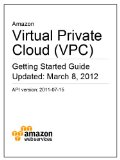So you have decided to move to the cloud, you have pain-stakingly researched which provider best fits your companies cloud aspirations and goals, and you have signed the dotted line. What now?, sit back and wait for inplementation?. I`m afraid not, this is possibly the most critical time to oversee your change management and employee training plans. A recent survey found that 40% of cloud adopters had issues with their cloud due to training issues and longer than anticipated lead times. Many cloud consultants and providers would echo this sentiment. It`s an anxious time for Enterprise in the few weeks before and after their cloud transition. But typically the issues encountered are simple ones. Little niggles around every-day tasks like printing – file exchange and new logging on procedures and remote mobile connection problems. Employees need to get comfortable with a new way of working and often it is insufficient training which contributes to transition issues. There are many benefits to cloud computing which include remote working and productivity enhancements. Employees need to be adecquately educated in order to fully reap the cloud benefits. The initial weeks of business cloud transition are normally a little disruptive, more so, if employees or management are not technology savy. A few weeks of disruption can become a few months, if some measures are not handled correctly. Measures business managers can take to minimise any initial issues are: 1- Enable employee training, it`s a good idea to show people how the cloud operates, log on procedures and support contacts if in difficulty. 2:- Explain the benefits of cloud to people, how remote wworking can benefit the employee as much as the employer. Cloud computing is the future, ensure employees understand that moving to the cloud is as much for their benefit, as the companies continued ability to compete in it`s market area. 3:- Have an expert on-site in the initial period before and after cloud deployment. This consultant, should be on hand to answer adhoc questions and handle on-site fixs. Having an experienced cloud expert on-site is perhaps the most important measure an Enterprise can take. This expert, should under-take change management training and provide a confident hands-on presence. Your cloud provider may or may not provide this consultant, if not, find a reputable freelance cloud consultant, familiar with your cloud model and charge them with ensuring a smooth transition to a cloud environment. 4:- Study the project in detail, the smallest things can create the most issues. Once satisfied, get some fresh eyes to look it over, if every-ones happy, procede. 5:- Once your Enterprise is live in the cloud, ensure your provider has representitives on-site for a few days to enable a smooth cloud integration and is availible to engage with key employees. 6:- Keep employees informed, create a document which out-lines all the changes occuring, a cloud calendar if you like. Enter the dates on which changes are due to take place and responsibilities shift. Engage with your employees, and make the change to cloud a joint venture. The move into cloud computing is an anxious time for Enterprise. Follow the points out-lined and any issues should be minimilised. Engage with your provider and employees alike. Hold a talk on why the move to cloud is happening, explain the need to keep the company in line, or ahead of it`s competition, and how the change benefits all. If handled correctly a positive buzz can be created around the prospects of moving to the cloud. Company morale can be lifted, which in turn encourages productivity. Author: CloudIssues.net/category/articles
Cloud Issues? And How Enterprise Can Avoid Them






















Stay in touch!